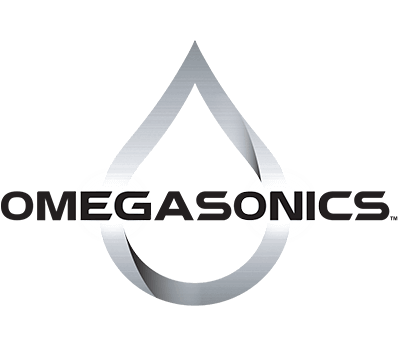In addition to the incredible time-savings we get from ultrasonic cleaning versus cleaning by hand, there are safety and health savings as well. The less contact we must make with the parts we’re cleaning, the less likely injury will occur somewhere during the process. The tools, chemicals, and the parts themselves require special precautions to be taken if we are to avoid injury while hand cleaning.
These risks don’t even cross our minds when we use ultrasonic cleaning methods to remove the contaminants from heavy, sharp, oddly shaped, or intricate parts and assemblies.
The most obvious concern when cleaning parts manually is our exposure to the cleaning chemicals. In almost all cases, cleaning parts by hand requires the use of spray solvents, degreasers, corrosive alkalis and acids, or organic cleaning agents alone or in combination. Not only are most of these chemicals injurious to the body in some way—they can attack our skin, lungs, vital organs, and eyes—and they are even more dangerous when used in the wrong combinations.
This is easy to do when manually cleaning components, even when we think we have one chemical completely removed before applying another. Ultrasonic cleaning does not expose us to any of these concerns, because the solutions used in ultrasonic cleaners are safe and nontoxic. Omegasonics looks at the increased safety risk involved with the manual cleaning of parts versus ultrasonic cleaning.
Tools are another ultrasonic safety issue. Cleaning parts by hand often requires wire brushes, high-speed power tools, scrapers, files, sanders, utility knives, and hand picks. All of these tools have the potential to injure us during use, from cuts and scrapes to puncture wounds and electric shock. Furthermore, hard scales and oxides we remove fly everywhere, with the potential to get into our eyes.
Wearing the required personal protective equipment during use is essential, but even doing that creates concerns as we risk getting overheated, frustrated, or rushed, and getting injured because of it. Ultrasonic cleaning requires no such tools; we drop the parts in a basket, turn the ultrasonic cleaner on, and wait.
It’s common for us to use compressed air and high-pressure water when we clean parts by hand, too. Compressed air is great for blowing out blind holes and hidden passages, removing loose debris, and powering pneumatic cleaning tools, while high-pressure water is excellent for knocking off scale and debris from parts.
But both also create safety concerns, since a hose can come loose and whip around, causing injury. Blowing compressed air into a passageway or hole creates airborne particulate that can penetrate skin or get into our eyes. Accidentally running a high-pressure water nozzle over your hand or foot can actually cut off a finger or toe. None of these concerns are present with ultrasonic cleaning systems.
Ergonomic injuries are another long-term health concern if we have a job that requires us to clean multiples of the same part hour after hour, day after day. Repetitive motion injuries are very painful and sneak up on us slowly. They are also very likely if we have to clean the same part by hand hundreds of times a day.
Once again, this is where ultrasonic cleaning makes a world of sense, particularly if we own a business that produces thousands of small parts hourly or daily. Cleaning them by hand is not only time-consuming and expensive, but sets us up for a workers’ compensation claim, and destroys an employee’s quality of life for a long time.
Every “touch” of a part during the manual cleaning process, whether from a tool, from handling, or from chemicals, increases our potential for injury. Ultrasonic cleaning process helps us not only avoid, but eliminate, a great number of these ultrasonic safety concerns. We owe it to ourselves—and our employees—to maximize the use of ultrasonic cleaners, so we can minimize the potential for injury.

